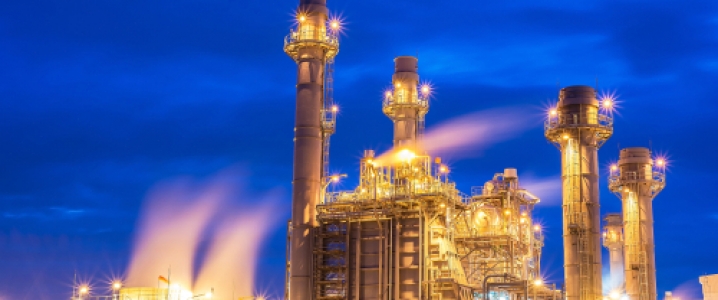For many years Southeast Asia has been a cautionary tale for what not to do in terms of energy sector economics. Once one of the world’s most active energy markets, Southeast Asia was hit with wave after wave of economic and political hardships that arrested its energy growth, from political instability in Thailand to growing nationalization paired with devastating natural disasters in Indonesia, not to mention myriad offshore territorial disputes throughout the region. This all dovetailed with historically low oil prices around the globe, making Southeast Asia woefully undesirable to investors.
Now, as Southeast Asia continues to urbanize at a breakneck speed, the developing region is projected to see a massive growth in energy demand over the next 20 years. Demographic changes are to produce a staggering 100-150 million new middle-class consumers in the region. Vietnam will match China as a 50 percent urban country by 2030, with the Philippines and Indonesia, each home to mega-metropolises and massive populations, not far behind.
Expected to increase by a whopping two thirds by the year 2040, Southeast Asia’s energy demand will require enormous investment and infrastructure in the energy generation and transmission sectors. The surging demand begs the question: will Southeast Asia lean harder into coal and carbon or move ahead with more sustainable resources like renewables and natural gas?
By just 2030, it is anticipated that the Association of Southeast Asian Nations (ASEAN) region will become the fourth largest energy consumer in the world. The installed energy capacity in the region will more than double, from 240 gigawatts to 565 gigawatts, meaning that Southeast Asia will be adding a larger quantity of energy capacity in the next 20 years than the current capacity of entire nation of Japan. Related: The Most Important Oil Factor In 2019
ASEAN--which is made up of Brunei, Cambodia, Indonesia, Laos, Malaysia, Myanmar, Philippines, Singapore, Thailand, and Vietnam--is home to a number of poor and developing countries that will be hit particularly hard by skyrocketing energy demand over the next two decades. Projections show that Indonesia, the Philippines and Vietnam will grow by 6-10 percent annually, while Myanmar, Cambodia and Laos will likely see growth in the double digits each year, meaning great economic pressure to come for these developing nations. The International Energy Agency has estimated that US$2.7 trillion will be necessary to meet the growing needs in Southeast Asia for energy supply, transmission and efficiency measures.
Currently, the Southeast Asian energy industry is dominated by coal. According to findings from a 2018 report published by CoalSwarm, a research institute based in San Francisco, California, ASEAN nations make up a quarter of the world’s top 20 investors in new coal capacity. Half of all the ASEAN nations made the top 20: Vietnam, Indonesia, the Philippines, Thailand and Cambodia.
Vietnam alone is projected to increase their coal generation by nearly five times, increasing from a little more than 10 gigawatts in 2014 to an estimate of more than 55 gigawatts by 2030. For reference, this massive increase in coal generation equates to the 2017 electricity supply for the entirety of Thailand. While the rest of the world is moving away from coal, Southeast Asia has great access to coal supplies and China is notorious for domineering state-owned energy enterprises that push coal investment in neighboring countries. China is currently directly involved in funding or constructing a whopping quarter of all energy projects in the entire mainland region of Southeast Asia.
While coal still reigns supreme, however, liquid natural gas is a rising star in the ASEAN nations. While many of the Southeast Asian nations have been producing and exporting LNG for years, this trend is slowly but surely reversing as the countries reserve more and more of the resource for domestic use. Indonesia is on track to flip its traditional role as an exporter of LNG to become a net importer by 2022, Thailand is constructing a floating, offshore natural gas hub in a joint development area with Malaysia, and the Philippines is working on constructing a $2 billion LNG hub at Batangas Bay, the first in the nation.
Related: Russia’s Wealth Fund: Oil Price War With U.S. Would Hurt Russian Economy
China has its eye on this corner of the energy market as well, and is powering ahead with its ambitious Belt and Road Initiative through the construction of LNG pipelines from Central Asia and Myanmar’s Bay of Bengal that will adjoin to China’s own national LNG distribution network. In fact, Asia already consumes half of the entire global natural gas supply, and that share will only continue to increase. The International Energy Agency projects that Asia will be responsible for a whopping two-thirds consumption of global natural gas supplies by 2040.
In addition to coal and LNG, ASEAN also has some lofty goals to incorporate more renewables into the region’s energy mix, with an ambitious shared target of 23 percent by 2025. Most experts are in agreement that the goal is unrealistic, as the developing nations of ASEAN continue to fall behind the rest in terms of alternative energy initiatives. Even if the region is able to reach a fraction of the goal, however, it will be a step in the right direction for an energy-hungry block that could be consuming a lot more coal if they don’t plan very carefully for an impending explosion of demand.
By Haley Zaremba for Oilprice.com
More Top Reads From Oilprice.com:
- The 7 Factors Driving Oil Prices In 2019
- Private Investment In Natural Resources Hits Record High
- BP Remains Bullish On Oil Demand Growth


















